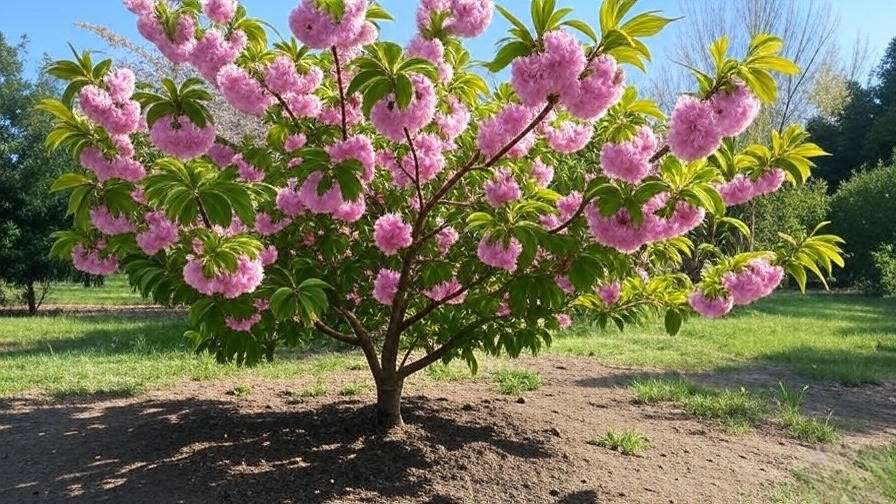Picture this: a sun-dappled backyard where vibrant cherries dangle from lush, healthy trees, ready for you to pick and savor. Growing your own cherry tree is a rewarding journey, but success hinges on one key factor — knowing how to create the perfect cherry tree growing environment. Whether you’re a novice gardener or a seasoned orchardist, this guide delivers expert, science-backed strategies to ensure your cherry trees thrive. As a horticulturist with over a decade of experience in fruit tree cultivation, I’ve distilled years of knowledge into this comprehensive article to help you grow bountiful, healthy cherry trees. Let’s dive into the essentials of soil, sunlight, water, and more to transform your garden into a cherry paradise! 🍒
1. Understanding Cherry Trees: The Foundation of Success 🌿
Cherry trees (Prunus avium for sweet cherries and Prunus cerasus for sour cherries) are deciduous fruit trees that thrive in temperate climates. Their stunning spring blossoms and delicious fruit make them a favorite among gardeners, but they demand specific conditions to flourish.
1.1 Why Cherry Trees Are Unique
Cherry trees come in two main types: sweet cherries, perfect for fresh eating, and sour cherries, ideal for baking and preserves. Popular cultivars include Bing and Rainier for sweet cherries and Montmorency for sour varieties. These trees are sensitive to soil quality, climate, and pest pressures, requiring careful planning to ensure success. Unlike some fruit trees, cherries need a specific number of “chill hours” (hours below 45°F) to produce fruit, making climate compatibility critical.
1.2 Benefits of Growing Cherry Trees
Beyond their juicy fruit, cherry trees offer numerous benefits. Cherries are packed with antioxidants, vitamins, and fiber, making them a nutritious addition to your diet. Their spring blossoms add aesthetic charm to any landscape, and their foliage provides shade and habitat for pollinators like bees. 🐝 Growing your own cherries also reduces your carbon footprint by cutting down on store-bought produce.
Expert Insight: “Cherry trees are a fantastic choice for home gardeners because they combine beauty, utility, and ecological benefits,” says Dr. Emily Carter, a certified arborist with 15 years of experience. “With the right care, they can yield fruit for decades.”
2. Choosing the Right Cherry Tree for Your Environment 🏡
Selecting the right cherry tree variety is the first step toward a thriving orchard. Your choice depends on your climate, space, and culinary goals.
2.1 Selecting the Best Variety
Sweet cherries, like Stella or Lapins, are ideal for snacking and require warmer climates, while sour cherries, like Morello, tolerate colder regions and are great for cooking. Dwarf varieties, such as Compact Stella, are perfect for small gardens or containers, growing to 8–12 feet, while standard trees can reach 20–35 feet. Consider your space and pollination needs — some varieties are self-pollinating, while others require a compatible cultivar nearby.
2.2 Assessing Your Climate and Hardiness Zone
Cherry trees thrive in USDA Hardiness Zones 5–8, though some varieties tolerate Zone 4 or 9. Check your zone using the USDA Plant Hardiness Zone Map. Most cherries need 500–1000 chill hours to set fruit, so verify your region’s winter temperatures align with your chosen variety’s requirements. For example, Bing needs 700–800 chill hours, while Stella requires fewer, making it more versatile. Coastal areas may need varieties resistant to humidity, while inland regions should prioritize frost tolerance. ❄️
Tip: Here’s a quick reference table for popular cherry varieties:
| Variety | Type | Chill Hours | Hardiness Zone | Self-Pollinating? |
|---|---|---|---|---|
| Bing | Sweet | 700–800 | 5–8 | No |
| Stella | Sweet | 400–500 | 5–9 | Yes |
| Montmorency | Sour | 700–900 | 4–8 | Yes |
| Morello | Sour | 500–600 | 4–8 | Yes |
3. Creating the Perfect Soil Environment 🌱
Healthy soil is the backbone of a thriving cherry tree. The right soil conditions ensure strong root development and abundant fruit production.
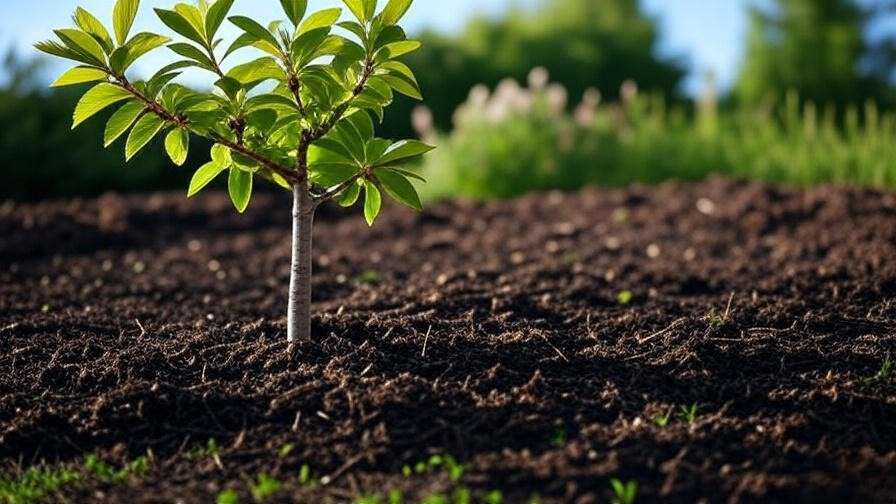
3.1 Soil Type and Composition
Cherry trees prefer well-draining, loamy soil with a pH between 6.0 and 7.0. Test your soil using a home testing kit or send a sample to your local agricultural extension service. If your soil is too acidic (below 6.0), add lime to raise the pH; if too alkaline (above 7.0), incorporate sulfur or organic matter like compost. Avoid heavy clay soils, which retain water and cause root rot, or sandy soils that drain too quickly.
3.2 Soil Preparation Techniques
Before planting, prepare your site:
- Clear the area: Remove weeds, rocks, and debris.
- Amend the soil: Mix in well-rotted compost or aged manure to boost fertility.
- Improve drainage: If your soil is clay-heavy, create a raised bed or mound to prevent waterlogging.
- Mulch: Apply a 2–4-inch layer of organic mulch (e.g., wood chips or straw) to retain moisture and suppress weeds. 🌾
Expert Insight: A 2023 study from the University of California Cooperative Extension found that cherry trees grown in well-amended, loamy soil yielded 20% more fruit than those in unamended soil.
4. Optimizing Sunlight and Location ☀️
Cherry trees are sun-lovers, and choosing the right location sets the stage for healthy growth.
4.1 Sunlight Requirements
Your cherry tree needs 6–8 hours of direct sunlight daily to produce energy for growth and fruiting. Observe your yard throughout the day to identify sunny spots. Avoid areas shaded by buildings, fences, or other trees, as insufficient light leads to weak growth and reduced yields.
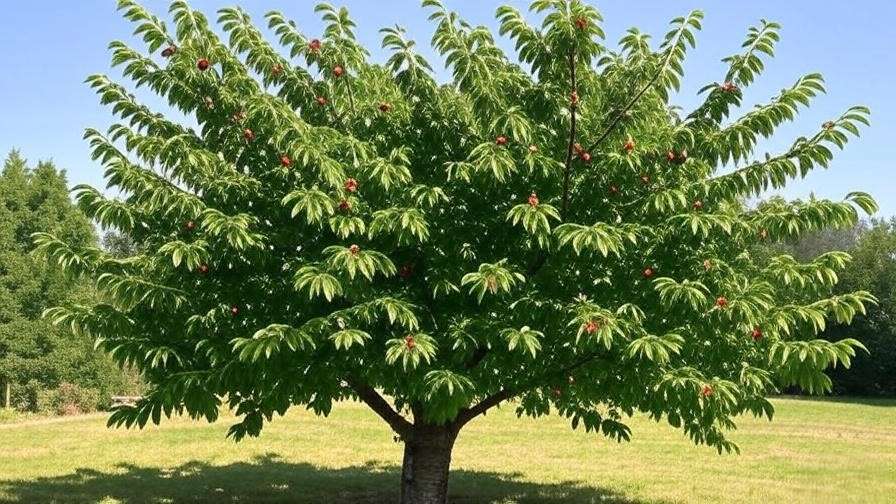
4.2 Site Selection Best Practices
Choose a site with:
- Good air circulation: Prevents fungal diseases like powdery mildew.
- Elevated terrain: Reduces frost risk by allowing cold air to drain away.
- Proper spacing: Plant standard trees 20–25 feet apart and dwarf trees 8–12 feet apart to ensure adequate light and pollination. 🐝
Checklist for Site Selection:
- 6–8 hours of direct sunlight
- Well-draining soil
- No frost pockets
- Space for root and canopy growth
5. Watering and Irrigation: Striking the Right Balance 💧
Proper watering is critical, especially during a cherry tree’s first few years.
5.1 Watering Needs for Cherry Trees
Young trees need consistent moisture to establish roots — about 1–2 inches of water per week. Mature trees are more drought-tolerant but still require regular watering during dry spells, especially during flowering and fruiting. Overwatering can cause root rot, while underwatering leads to leaf drop or small fruit. Look for signs like yellowing leaves (overwatering) or wilting (underwatering).
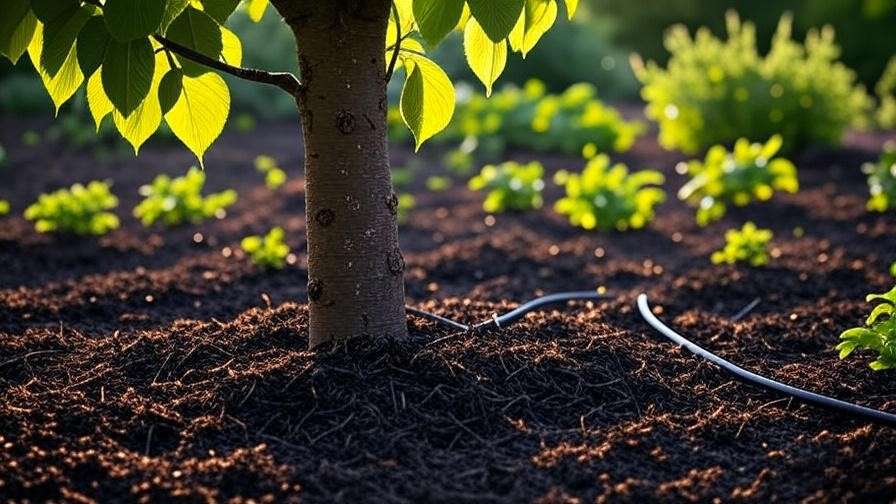
5.2 Irrigation Systems for Efficiency
Drip irrigation or soaker hoses deliver water directly to the root zone, minimizing waste. Water deeply once or twice a week rather than shallow daily watering. In hot climates, increase frequency during summer. Apply mulch to retain moisture and reduce evaporation.
Case Study: Jane, a gardener in Oregon, doubled her cherry yield by switching to drip irrigation and mulching, ensuring consistent moisture without waterlogging.
6. Pruning and Maintenance for Healthy Growth ✂️
Pruning is essential for shaping cherry trees, promoting fruit production, and preventing disease. Regular maintenance ensures your tree remains vigorous and productive for years.
6.1 Why Pruning Matters
Pruning removes dead or overcrowded branches, improves air circulation, and allows sunlight to penetrate the canopy, boosting fruit quality. It also helps maintain a manageable tree size, especially for dwarf varieties. The best time to prune is late winter or early spring, before bud break, when the tree is dormant. This minimizes stress and reduces disease risk.
6.2 Pruning Techniques for Cherry Trees
Follow these steps for effective pruning:
- Sanitize tools: Use clean, sharp pruning shears or a pruning saw to prevent disease spread.
- Remove dead or damaged wood: Cut back to healthy tissue at a 45-degree angle.
- Thin the canopy: Remove inward-growing or crossing branches to open up the center.
- Shape the tree: For young trees, aim for an open-center or vase shape to maximize light exposure. For mature trees, maintain the structure by trimming excessive growth.
- Avoid over-pruning: Remove no more than 25% of the canopy in a single season to avoid stressing the tree.
Common mistakes include pruning during active growth (summer) or leaving stubs, which can invite pests. For visual guidance, check out pruning tutorials from reputable sources like your local cooperative extension.
Tip: Invest in high-quality pruning tools and disinfect them with a 10% bleach solution between cuts to ensure clean, healthy pruning.
7. Pest and Disease Management 🐞
Cherry trees face threats from pests and diseases, but proactive management keeps them healthy.
7.1 Common Cherry Tree Pests
Key pests include:
- Aphids: Small sap-sucking insects causing curled leaves. Control with insecticidal soap or neem oil.
- Cherry fruit flies: Lay eggs in ripening fruit, leading to maggot-infested cherries. Use sticky traps or organic insecticides like spinosad.
- Birds: Love cherries as much as you do! Protect fruit with netting or reflective tape.
Organic methods, like introducing beneficial insects (e.g., ladybugs for aphids), are effective and eco-friendly. For severe infestations, consult your local extension service for chemical options.
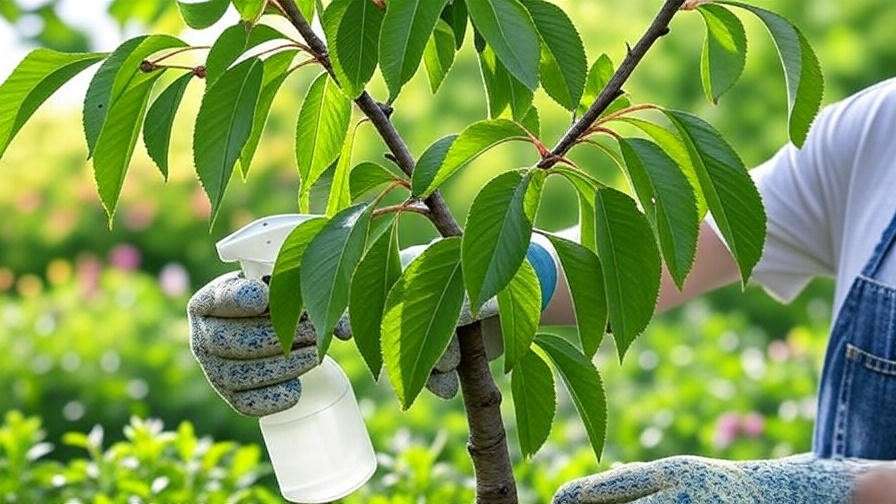
7.2 Preventing and Treating Diseases
Common diseases include:
- Brown rot: A fungal disease causing fruit rot and blossom blight. Remove affected fruit and apply a copper-based fungicide during bloom.
- Powdery mildew: White, powdery coating on leaves. Improve air circulation and use sulfur-based fungicides.
- Bacterial canker: Causes sunken, oozing lesions on branches. Prune affected areas and apply copper sprays in fall.
Prevent diseases by maintaining proper spacing, cleaning up fallen leaves, and avoiding overhead watering. According to the University of California’s Integrated Pest Management Program, cultural practices like these reduce disease incidence by up to 40%.
Expert Insight: “Integrated pest management (IPM) combines cultural, biological, and chemical controls for sustainable cherry tree health,” notes Dr. James Lee, a plant pathologist.
8. Pollination and Fruit Production 🐝
Pollination is the key to a bountiful cherry harvest. Understanding your tree’s pollination needs ensures consistent fruit set.
8.1 Understanding Cherry Tree Pollination
Some cherry trees, like Stella and Montmorency, are self-pollinating, meaning they can produce fruit without a second tree. Others, like Bing, require cross-pollination from a compatible variety blooming at the same time. Check pollination charts when selecting varieties to ensure compatibility. For example, Rainier and Bing are excellent pollinators for each other. Attract pollinators like bees by planting wildflowers or installing bee hotels nearby.
8.2 Maximizing Fruit Yield
To boost fruit production:
- Monitor flowering: Ensure blooms align with pollinator activity (early spring).
- Thin fruit: Remove excess young cherries (1–2 per cluster) to improve fruit size and prevent branch breakage.
- Fertilize appropriately: Apply a balanced fertilizer (e.g., 10-10-10) in early spring, followed by a nitrogen boost after fruit set. Avoid over-fertilizing, which can lead to excessive leaf growth at the expense of fruit.
Pollination Compatibility Chart:
| Variety | Compatible Pollinators | Bloom Time |
|---|---|---|
| Bing | Rainier, Van, Stella | Mid-season |
| Stella | Self-pollinating | Early to mid |
| Montmorency | Self-pollinating | Mid to late |
| Rainier | Bing, Lapins, Stella | Mid-season |
9. Seasonal Care Calendar for Cherry Trees 📅
Consistent care throughout the year keeps your cherry tree healthy. Here’s a month-by-month guide:
- January–February: Prune dormant trees, apply dormant oil sprays to control overwintering pests.
- March–April: Fertilize, mulch, and monitor for early blooms. Install pollinator-friendly plants. 🐝
- May–June: Water regularly during flowering and fruit set. Thin fruit as needed.
- July–August: Harvest cherries, monitor for pests, and maintain irrigation during dry spells.
- September–October: Clean up fallen leaves to prevent disease. Apply a fall fertilizer.
- November–December: Protect young trees from frost with burlap wraps. Check soil drainage. ❄️
Tip: Download a printable seasonal care checklist from your local extension service to stay organized.
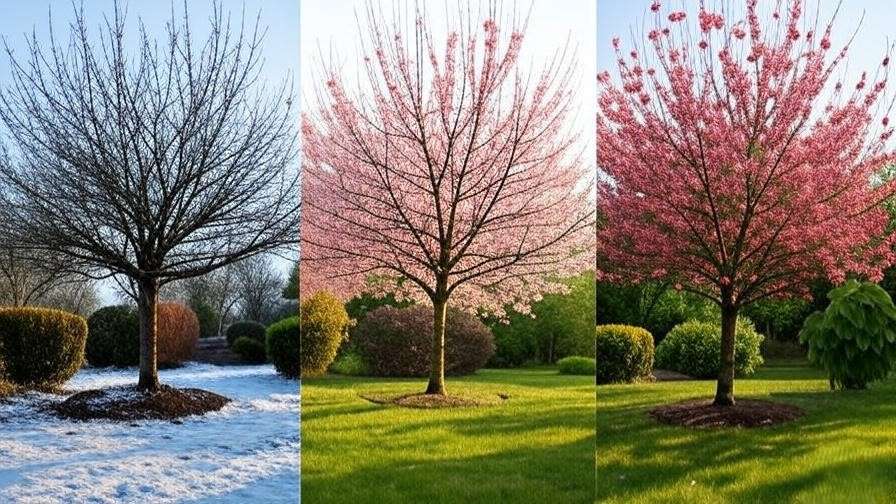
10. Troubleshooting Common Issues 🔧
Even with the best care, cherry trees can face challenges. Here’s how to address them.
10.1 Why Isn’t My Cherry Tree Fruiting?
Possible causes include:
- Insufficient chill hours: Ensure your variety matches your region’s winter temperatures.
- Poor pollination: Plant a compatible pollinator or attract more bees.
- Nutrient deficiency: Test soil and apply a balanced fertilizer if needed.
Solutions: Adjust variety selection, add pollinator plants, or consult an arborist for soil analysis.
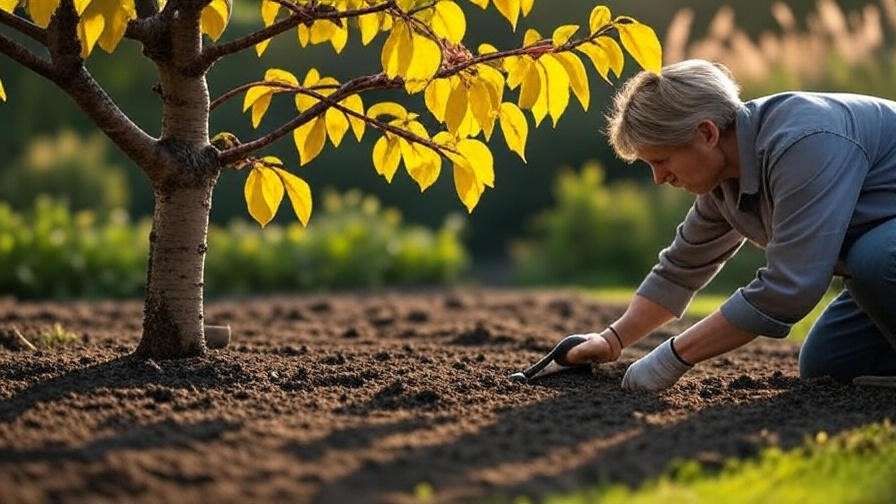
10.2 Addressing Environmental Stress
Signs of stress include yellowing leaves, stunted growth, or premature fruit drop. Mitigate by:
- Heat stress: Provide shade cloth during extreme heatwaves.
- Drought: Increase watering frequency and mulch to retain moisture.
- Frost damage: Cover young trees with frost blankets during late spring frosts.
Flowchart Idea: Create a visual troubleshooting guide for common issues, available as a downloadable resource.
11. FAQs: Answering Reader Questions ❓
Based on common gardening queries from X posts and forums:
- Q1: How long does it take for a cherry tree to bear fruit?
A: Most cherry trees produce fruit in 3–5 years (dwarf varieties) or 5–7 years (standard varieties). Proper care speeds up this timeline. - Q2: Can cherry trees grow in containers?
A: Yes, dwarf varieties like Compact Stella thrive in large containers (15–20 gallons) with well-draining soil and regular care. - Q3: What’s the best fertilizer for cherry trees?
A: Use a balanced 10-10-10 fertilizer in spring, supplemented with compost or aged manure for organic nutrients. - Q4: How do I protect my cherry tree from birds?
A: Install bird netting or use reflective tape to deter birds without harming them. - Q5: Are cherry trees high-maintenance?
A: With proper setup (soil, location, and variety selection), cherry trees require moderate maintenance, mainly pruning, watering, and pest monitoring.
12. Conclusion: Your Path to a Thriving Cherry Tree 🌸
Creating the perfect cherry tree growing environment is achievable with the right knowledge and effort. By optimizing soil, sunlight, water, pruning, and pest management, you’ll set your cherry tree up for years of beauty and bountiful harvests. Start today by assessing your garden, choosing the right variety, and following the expert tips in this guide. Share your cherry tree journey in the comments or on X — we’d love to hear your success stories! For more fruit tree care tips, explore our articles on apple tree cultivation or organic pest control. 🍒

